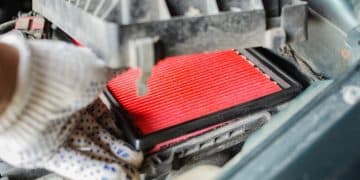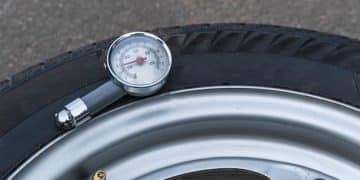Is Your Car Ready for Summer? 6 Overheating Prevention Tips
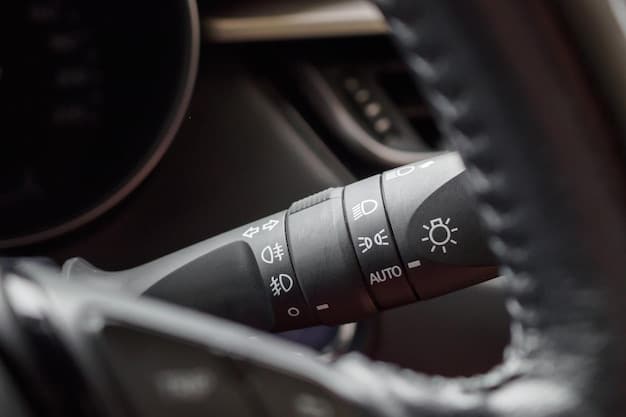
Ensure your car is ready for the summer heat with these six essential overheating prevention tips, including checking coolant levels, inspecting hoses, and maintaining your car’s cooling system.
Is your car prepared to handle the scorching summer heat? Don’t wait for steam to start billowing from under your hood! Is Your Car Ready for Summer? 6 Overheating Prevention Tips You Need to Know Now to keep your engine running cool and your road trips worry-free.
Check Your Coolant Levels: The Lifeline of Your Engine
Coolant, or antifreeze, is vital for regulating your engine’s temperature. It prevents overheating in the summer and freezing in the winter. Checking and maintaining the correct coolant levels is a simple yet crucial step in preventing summer overheating.
Why Coolant Levels Matter
Low coolant levels can lead to your engine overheating quickly, causing significant damage. Regularly monitoring coolant levels ensures the system functions efficiently.
How to Check Coolant Levels
Locate the coolant reservoir—usually a translucent plastic container near the engine. Check the level markings on the reservoir. If the coolant is below the “min” line, add a 50/50 mix of coolant and distilled water until it reaches the “max” line.
- Ensure the engine is cool before opening the coolant reservoir.
- Use a 50/50 mix of coolant and distilled water unless your vehicle manufacturer specifies otherwise.
- Never use tap water, as it can cause mineral deposits and corrosion.
Maintaining proper coolant levels is a fundamental aspect of summer car care. Regularly inspect and replenish your coolant to protect your engine from the harsh summer heat.
Inspect Hoses and Belts for Wear and Tear
Your car’s hoses and belts are essential for circulating coolant and powering vital components. These parts can degrade over time, especially under the stress of high summer temperatures. Regular inspection can prevent unexpected breakdowns.
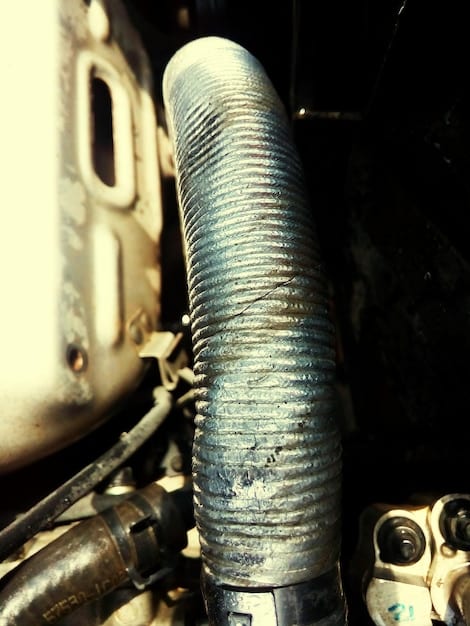
Common Issues with Hoses and Belts
Hoses can crack, become brittle, or even collapse, leading to coolant leaks and overheating. Belts can fray, crack, or stretch, affecting the performance of the water pump and other essential systems.
What to Look For
Inspect hoses for visible cracks, bulges, or leaks. Squeeze the hoses to check for sponginess or stiffness. Examine belts for cracks, fraying, or missing chunks. If you notice any of these issues, replace the affected parts immediately.
- Check the radiator hoses, heater hoses, and other coolant hoses.
- Pay close attention to belts that drive the water pump, alternator, and air conditioning compressor.
- Replace any parts that show signs of wear or damage.
Regularly inspecting your car’s hoses and belts is a proactive way to prevent breakdowns. Catching issues early can save you from costly repairs and keep your car running smoothly all summer long.
Ensure Your Radiator is Clean and Clear
The radiator plays a crucial role in dissipating heat from the coolant. If the radiator fins are blocked by debris, its efficiency can be significantly reduced, leading to overheating. Keeping your radiator clean ensures optimal cooling performance.
Why a Clean Radiator Matters
A clogged radiator can’t effectively cool the engine, leading to higher operating temperatures and potential overheating. This is especially critical during hot summer months when the engine is already under increased stress.
How to Clean Your Radiator
Visually inspect the radiator for obstructions like leaves, bugs, and dirt. Use a soft brush or a low-pressure water hose to gently remove any debris. Be careful not to bend the delicate fins.
- Avoid using high-pressure water, as it can damage the radiator fins.
- Consider using a fin comb to straighten any bent fins.
- Periodically have your cooling system flushed to remove internal deposits.
Maintaining a clean radiator is a simple yet effective way to keep your engine cool during the summer. Regular cleaning ensures that the radiator can perform its job efficiently, preventing overheating and potential engine damage.
Check Your Radiator Fan and Clutch
The radiator fan helps to pull air through the radiator, especially when the car is idling or moving slowly. A malfunctioning fan or fan clutch can significantly reduce the cooling system’s effectiveness, leading to overheating.
Testing the Radiator Fan
Start your engine and let it idle. Observe the radiator fan to ensure it’s engaging properly. If the fan is not running or seems to be running slowly, it may be faulty. Check the fan motor and electrical connections.
Inspecting the Fan Clutch
If your vehicle has a fan clutch, check its operation. When the engine is cold, you should be able to spin the fan with some resistance. When the engine is hot, the fan should engage more firmly.
- Replace a faulty fan motor if it’s not running at all.
- Ensure the fan blades are not damaged or obstructed.
- Consider upgrading to an electric fan for improved cooling performance.
Ensuring your radiator fan and clutch are functioning correctly is essential for maintaining optimal engine temperature. Regular checks and timely replacements can prevent overheating and keep your car running smoothly.
Monitor Your Engine Temperature Gauge
Keeping an eye on your engine temperature gauge is a simple yet crucial habit. It allows you to detect potential overheating issues early, giving you time to take action before serious damage occurs. Regular monitoring can save you from costly repairs.
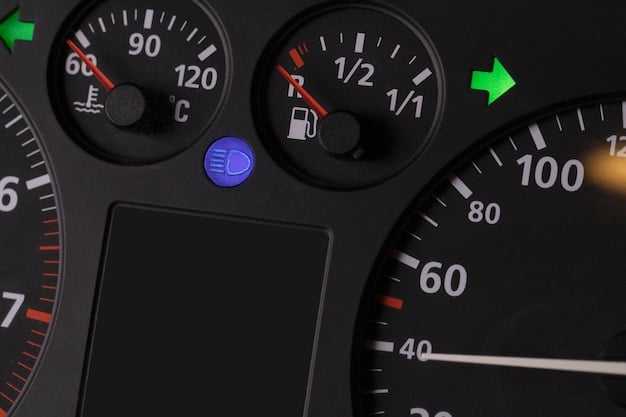
What to Watch For
The temperature gauge should typically stay within the normal operating range. If the gauge starts to climb towards the red zone, it indicates that the engine is overheating. Take immediate action to prevent damage.
Actions to Take When Overheating
If your engine starts to overheat, pull over to a safe location and turn off the engine. Allow the engine to cool down before checking the coolant level or attempting any repairs. Seek professional assistance if needed.
- Turn off the air conditioner to reduce the load on the engine.
- Turn on the heater to help dissipate heat from the engine.
- Check for any visible signs of coolant leaks or steam.
Consistently monitoring your engine temperature gauge is a key preventative measure. Early detection of overheating can help you take timely actions, minimizing potential damage and keeping your car on the road.
Consider a Coolant Flush and Fill
Over time, coolant can become contaminated with rust, scale, and other deposits, reducing its effectiveness. A coolant flush and fill removes the old coolant and replaces it with fresh fluid, restoring the cooling system’s performance. This is especially important before the hot summer months.
Why a Coolant Flush is Beneficial
A coolant flush removes contaminants that can cause corrosion and reduce heat transfer. Fresh coolant also contains additives that protect the cooling system components from rust and scale buildup.
When to Flush Your Coolant
Consult your vehicle’s owner’s manual for the recommended coolant replacement interval. Typically, coolant should be flushed and replaced every two to three years, or every 30,000 to 60,000 miles.
- Choose a high-quality coolant that meets your vehicle manufacturer’s specifications.
- Ensure the cooling system is properly flushed to remove all old coolant and debris.
- Consider having a professional perform the coolant flush to ensure it’s done correctly.
A coolant flush and fill is a vital maintenance task that can significantly improve your car’s cooling system performance. By removing contaminants and replenishing the coolant, you can prevent overheating and extend the life of your engine.
| Key Point | Brief Description |
|---|---|
| 🌡️ Check Coolant | Maintain proper coolant levels to prevent overheating. |
| ⚙️ Inspect Hoses/Belts | Look for cracks or wear to avoid leaks and breakdowns. |
| 💨 Clean Radiator | Ensure radiator is free of debris for efficient cooling. |
| 🌡️ Monitor Temperature | Watch the temperature gauge to catch overheating early. |
[Frequently Asked Questions]
▼
Common causes include low coolant levels, a clogged radiator, faulty radiator fan, or issues with the thermostat. Hot weather puts extra stress on your car’s cooling system, making these problems more apparent.
▼
It’s best to check your coolant level at least once a month, and especially before long trips. A quick visual inspection of the coolant reservoir can help you catch low levels early and prevent overheating.
▼
In an emergency, you can use distilled water. However, it’s not a long-term solution as water lacks the corrosion inhibitors found in coolant. Always switch back to a 50/50 coolant mix as soon as possible.
▼
Signs include the temperature gauge rising to the red zone, steam coming from under the hood, a burning smell, and reduced engine power. If you notice these signs, pull over safely and turn off the engine.
▼
A coolant flush removes old, contaminated coolant, which can reduce the cooling system’s efficiency. Fresh coolant helps maintain optimal engine temperature, preventing overheating and potential engine damage, improving overall performance.
Conclusion
Preparing your car for summer is crucial to avoid overheating and ensure safe travels. By following these six overheating prevention tips—checking your coolant levels, inspecting hoses and belts, cleaning your radiator, checking your radiator fan, monitoring your engine temperature gauge, and considering a coolant flush and fill—you can keep your engine running cool and enjoy worry-free summer driving.


